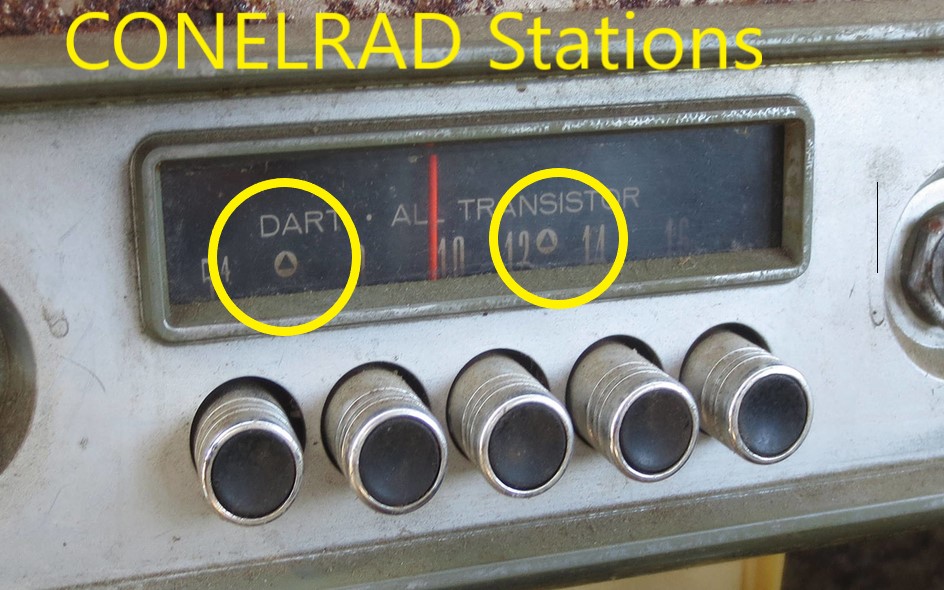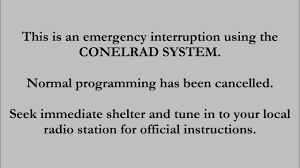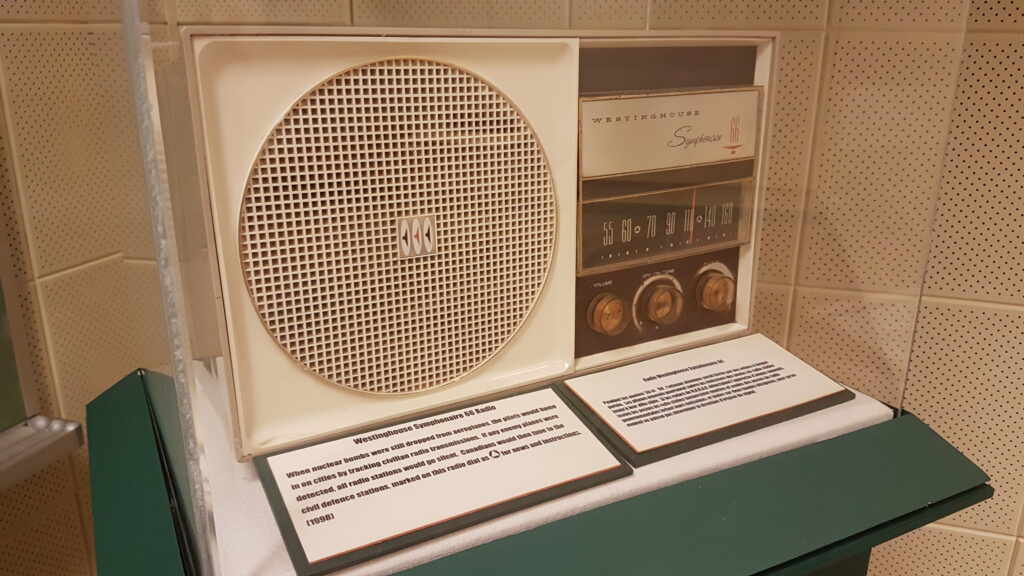Extract from Wikipedia (click for the excellent full article)
“CONELRAD (Control of Electromagnetic Radiation) was a method of emergency broadcasting to the public of the United States in the event of enemy attack during the Cold War. It was intended to allow continuous broadcast of civil defense information to the public using radio stations, while rapidly switching the transmitter stations to make the broadcasts unsuitable for Soviet bombers that might attempt to home in on the signals (as was done during World War II, when German radio stations, based in or near cities, were used as beacons by pilots of bombers).

U.S. President Harry S. Truman established CONELRAD in 1951. After the development of intercontinental ballistic missiles reduced the likelihood of a bomber attack, CONELRAD was replaced by the Emergency Broadcast System (EBS) on August 5, 1963, which was later replaced by the Emergency Alert System (EAS) on January 1, 1997; all have been administered by the Federal Communications Commission (FCC).

Unlike the EBS and EAS, CONELRAD was never intended to be used for local civil emergencies such as severe weather.”
Note the two circled triangles on the tuning display that indicate the CONELRAD civil defence stations. The Diefenbunker Museum has an example of a radio labeled for CONELRAD stations in its CBC studio/control room.




